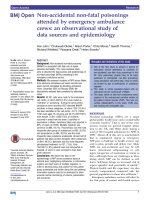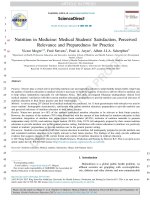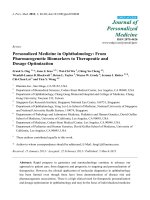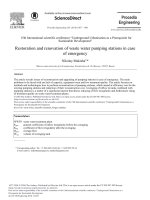Pediatric emergency medicine trisk 3428 3428
Bạn đang xem bản rút gọn của tài liệu. Xem và tải ngay bản đầy đủ của tài liệu tại đây (70.17 KB, 1 trang )
Open wounds should be cleaned and a sterile dressing applied. The fracture
should be immobilized. Prophylactic intravenous antibiotics should be
administered, and tetanus prophylaxis should be given according to the standard
guidelines. Current antibiotic recommendations are for the administration of
early, systemic, wide-spectrum antibiotic therapy directed at gram-positive and
gram-negative organisms. A commonly recommended regimen is for a firstgeneration cephalosporin (e.g., cefazolin) with the addition of an aminoglycoside
(e.g., gentamicin) for larger open fractures (skin laceration >1 cm with significant
soft tissue damage and gross contamination). As an alternative to
aminoglycosides, a third-generation cephalosporin or other agent with activity
against gram-negative bacteria may be selected. For injuries at high risk for
anaerobic infection (e.g., occurring on a farm), clinicians should add ampicillin or
penicillin. Urgent orthopedic consultation is necessary for surgical debridement,
irrigation, and definitive care of the wound and fracture.
If there is suspicion for compartment syndrome, compartment pressures in the
injured extremity should be obtained; however, this may be difficult in an awake
young child, especially if less than 5 years old. Compartment pressures >30 mm
Hg have been used to diagnose compartment syndrome. Newer approaches
suggest that compartment pressures should be interpreted in the context of
systemic blood pressures. Compartment pressures within 30 mm Hg of either the
diastolic blood pressure or the mean arterial pressure are concerning for
compartment syndrome. Urgent orthopedic consultation is necessary if there is
any concern for compartment syndrome, which may require treatment with
fasciotomy.
Disposition
All children with open fractures or with concern for/diagnosis of compartment
syndrome should be admitted to the hospital for ongoing orthopedic care given
the high risks for infection and neuromuscular injury.
MULTIPLE TRAUMA
CLINICAL PEARLS AND PITFALLS









